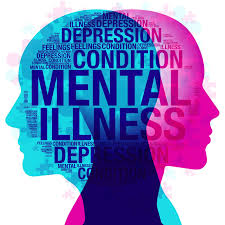Mental health has become a global challenge, affecting millions of people and creating ripple effects on societies and economies.
The World Health Organization (WHO) estimates that in 2019, nearly 970 million people worldwide were living with a mental disorder, with anxiety and depression being the most common conditions.
The impact of mental health conditions extends beyond the individuals affected, influencing families, workplaces, and entire communities.
The Burden of Mental Health Conditions
Mental health conditions encompass a broad spectrum, including mental disorders, psychosocial disabilities, and other mental states associated with significant distress, impairment in functioning, or risks such as self-harm.
One of the most alarming statistics associated with mental disorders is their contribution to disability-adjusted life years (DALYs). Globally, mental disorders account for 1 in 6 years lived with disability, highlighting their impact on overall health and well-being.
Moreover, individuals suffering from severe mental health conditions face a significantly reduced life expectancy, dying 10 to 20 years earlier than the general population.
The heightened risk of suicide, physical health comorbidities, and experiences of human rights violations further exacerbate the suffering of those affected.
Additionally, the economic toll of mental health conditions is staggering, with productivity losses far exceeding the direct costs of mental healthcare.
The Economic and Social Consequences
The economic burden of mental health conditions cannot be overlooked. Lost productivity due to mental illness affects workplace efficiency and national economies.
Employees experiencing depression and anxiety disorders often struggle with reduced work output, absenteeism, and even job loss. Companies, in turn, bear the cost through lost revenue, increased healthcare expenses, and higher turnover rates.
Socially, mental health disorders lead to strained relationships, increased dependency, and reduced quality of life. Many individuals suffering from mental illnesses experiences stigma and discrimination, further isolating them from support systems and reducing their chances of seeking help.
The human rights violations experienced by those with severe mental disorders ranging from neglect to abuse compound the challenges they face.
The Role of Preventive Medicine
While the statistics on mental health paint a grim picture, preventive medicine offers a proactive approach to mitigating its impact.
Preventive medicine focuses on strategies that reduce the risk of developing mental health disorders and promote overall well-being. These strategies include:
1. Early Detection and Screening
Routine mental health screenings in schools, workplaces, and healthcare facilities can help identify at-risk individuals before symptoms become severe.
Early intervention strategies, such as cognitive behavioral therapy (CBT) and counseling, have been shown to prevent the progression of mental disorders.
2. Lifestyle Modifications
Adopting a healthy lifestyle plays a crucial role in mental health maintenance. Regular physical activity, a balanced diet, and adequate sleep are fundamental components of mental well-being. Studies show that exercise reduces symptoms of depression and anxiety by releasing endorphins and promoting neural growth.
3. Mindfulness and Stress Management
Practices such as meditation, yoga, and deep breathing exercises can help individuals manage stress and improve emotional resilience.
Chronic stress is a significant contributor to mental health conditions, making stress management techniques essential in preventive healthcare.
4. Workplace and Educational Support Systems
Organizations and educational institutions must create environments that promote mental well-being. This includes providing access to mental health resources, fostering open conversations about mental health, and implementing policies that support work-life balance.
5. Community-Based Support
Social support is a key protective factor against mental illness. Community-based mental health programs, peer support networks, and outreach initiatives can provide individuals with the help they need, reducing isolation and stigma.
A Call to Action
Addressing mental health requires a shift in how societies perceive and respond to mental disorders.
Governments, healthcare systems, and private organizations must collaborate to integrate mental health services into primary healthcare, making them accessible and affordable.
Additionally, continued investment in mental health research and awareness campaigns is crucial in breaking down stigma and promoting preventive measures.
The conversation around mental health is no longer just about treatment but also about prevention.
With a comprehensive approach that combines early intervention, lifestyle modifications, workplace support, and community engagement, the global mental health crisis can be mitigated, leading to healthier individuals and societies.

